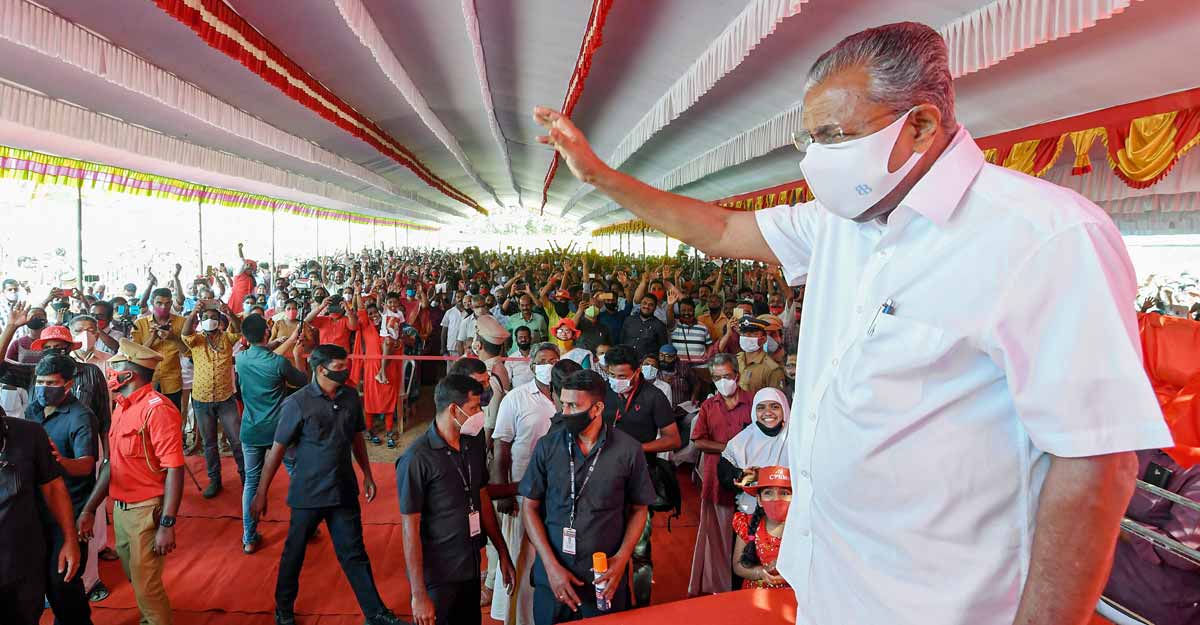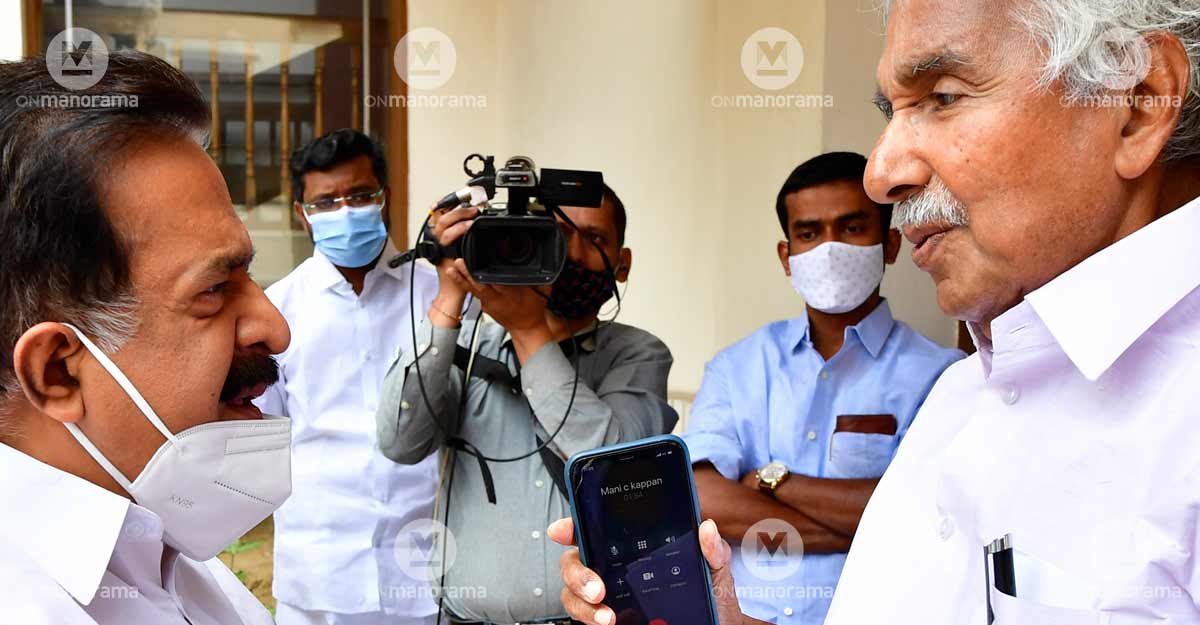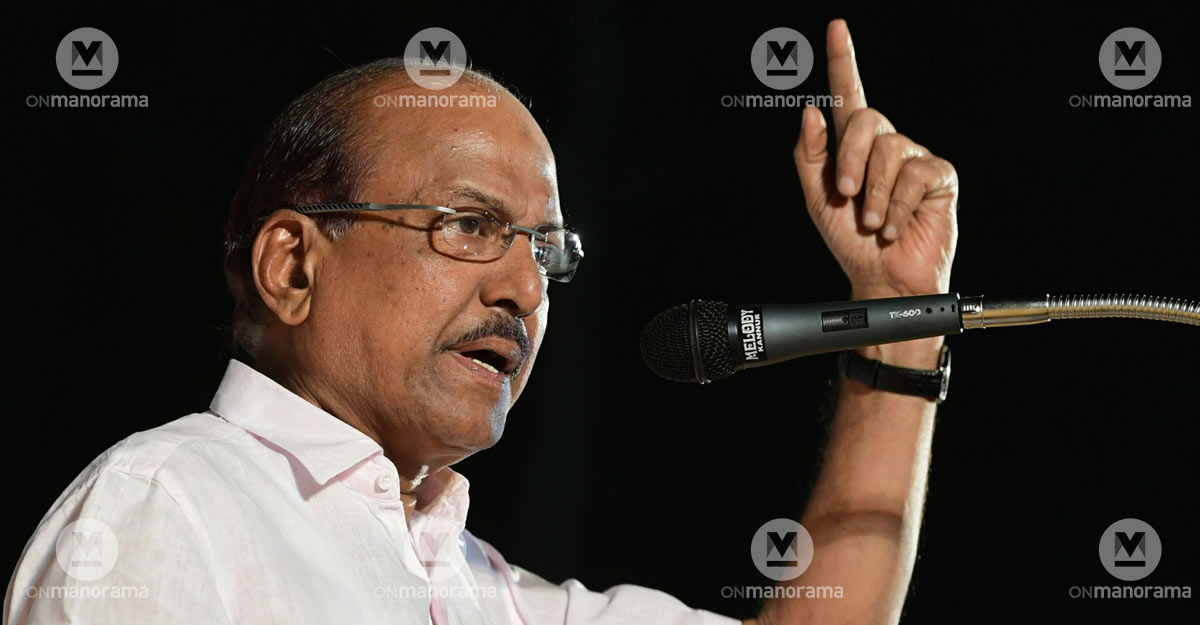On counting day, here are some questions that would have gone into the making of the result

Mail This Article
Will history repeat itself or will it be re-written? The answer will be had in a few hours. Though initial trends could be spotted from 8:30am, a clear picture would emerge only by afternoon, between 3pm and 4pm, after the postal votes too are taken into account.
Never before has a ruling party in Kerala looked near certain to retain power. The 2020 local body poll results provided the first telltale signs that the Pinarayi Vijayan government could retain power. The pre-poll and post-poll surveys seem to have nearly confirmed it, some have even predicted a landslide for the LDF. However, the Manorama News-VMR Kerala Exit Poll hints at even a hung Assembly.
In 2016, the UDF enjoyed a slight edge only in three districts: Ernakulam, Kottayam and Malappuram. The rest saw an LDF sweep. Can it get any worse for the UDF?
Will Kerala shed its fickle nature?
But the Kerala voter is a notoriously impatient beast. She has never really allowed any of the political formations to feel settled. But has COVID-19, and the government's handling of the crisis, induced a rethinking in the Malayali voter? Does she fear a change of guard in this moment of crisis?
Interestingly, the pandemic period was also the time when the Pinarayi Vijayan government was buffeted by an avalanche of corruption charges, from Sprinklr and the gold smuggling scandal to the deep sea fishing deal. Most of these charges had enough material to bury alive a ruling front.
Yet, Pinarayi Vijayan seems to be standing tall, rising above the debris like a mighty statue untouched by the ravages of nature. If there is such a perception, as the pre-poll and exit polls show, this does not square with the largely cynical political culture of Kerala.

Is there a lovable fascist?
What's more, Vijayan's authoritarian tendencies were also on show in these last five years, especially when he sought to smother free speech by trying to amend the Police Act and also when he attempted to sideline the council of ministers and acquire more administrative powers for himself.
Worse, Vijayan has become the sole face of the LDF. It is as if he is far bigger than the cause, a condition that is more fascist than Marxian.
If in spite of all this Vijayan still is admired, the usually unforgiving Kerala voter has clearly changed her colours. She seems to have pardoned the chief minister's alleged failures in return for what is perceived as his gift of good governance. Has Vijayan emerged as the most trusted chief minister in Kerala history?

Is Pinarayi above corruption?
Look at the way he took on the charges levelled against him. What he employed was a 'double blow' strategy. One, plain denial. He bluntly refuted all allegations hurled at him, refusing to offer any elaborate explanations that could provoke further questions.
Two, constant dialogue with the masses. Both were done simultaneously.
So, even while curtly saying he had not done anything wrong, Vijayan charmed his way into Kerala's living rooms by offering daily doses of assurance. His sunset COVID-19 briefings made him part of family. No chief minister in history had ever sustained such a long and personal dialogue with the voters.
As the pandemic stretched, even if he had done anything wrong, Vijayan would have become too close for families to even think of distancing themselves from him. Or, on the other hand, has Vijayan's repeated interactions with the press unwittingly cemented the image he already had of an intolerant leader?
Who has given the better offer?
On top of what looked like a familial bond he had struck with the voters was Vijayan's generous welfare measures, especially free provision kits that he made available for even upper middle class families.

But if welfare is a decisive factor, the UDF seems to have promised a more attractive package: NYAY scheme that promises Rs 6,000 a month, or Rs 72,000 a year, for poor households. Could this have swayed voters?
Will minority votes scatter or consolidate?
Then there are religious and caste factors. With the arrival of the Jose K Mani faction to the LDF fold, the feeling is that the Christian minority in Central Travancore, a traditional UDF vote bank, would gravitate towards the LDF.
It is also a fact that CPM leaders, including the chief minister, had attempted to exploit the Christian community's suspicion of the Muslim community. The objective was to keep the Christian community away from a front that had the Muslim League as a dominant partner.
The LDF government's decision to provide 10 per cent reservation for the economically weaker among the forward castes has also pleased the Church. The decision had managed to intensify the Christian dislike for the Muslim community, which has questioned the move.
Yet, in what looked like a political sleight of hand, the chief minister has emerged as the messiah of the Muslim community, too. His leadership role in the anti-CAA agitation had electrified the community. But later, when he and other CPM leaders harped too much about terrorism in the Muslim community, he could have also alienated the community.

The UDF, on the other hand, hopes the Muslim community would as usual stand by it and seems assured that its leaders, especially Oommen Chandy and P K Kunhalikutty from the League, had done enough to mend fences with the Christian denominations.
Can BJP be more than a spoiler?
The UDF, however, could have trouble with the swelling influence of the BJP. It might lose upper caste Nair votes to the saffron party. Add to it the loss of Christian votes and the UDF could be staring at defeat.
But the 2019 Lok Sabha polls had shown that the BJP, especially its ally Bharath Dharma Jana Sena (BDJS), could encroach upon CPM votes, too.
The religious and caste equations are too much in flux to provide any easy answers.
Nonetheless, if the BJP is unable to improve its vote share beyond 15 per cent, it can be safely said the party has reached a saturation point in Kerala.


